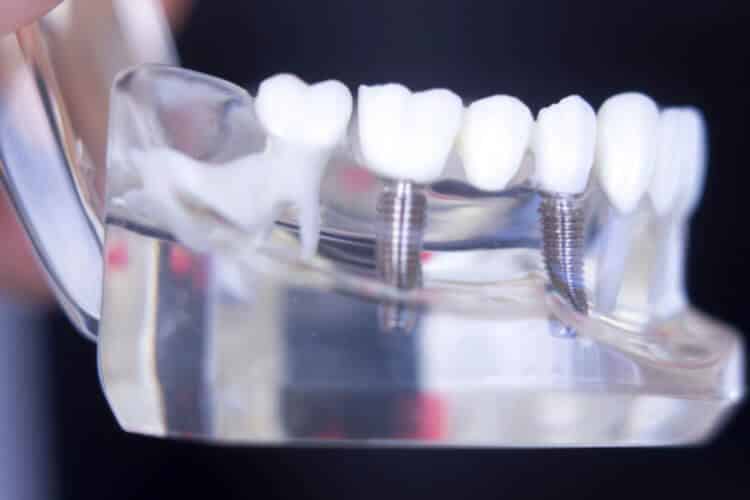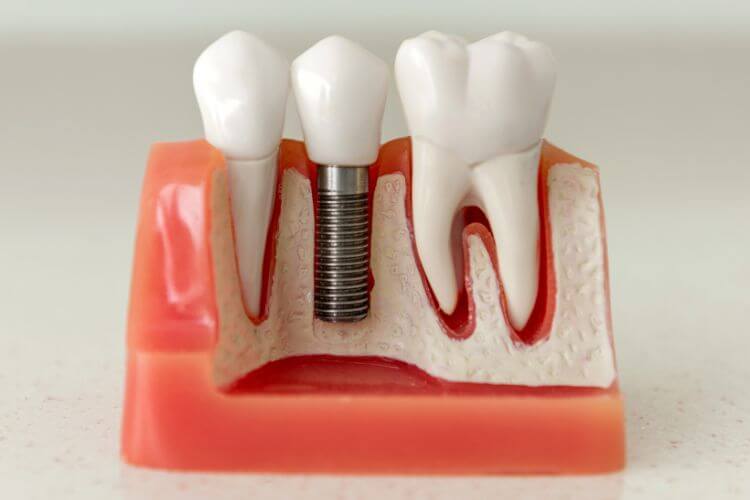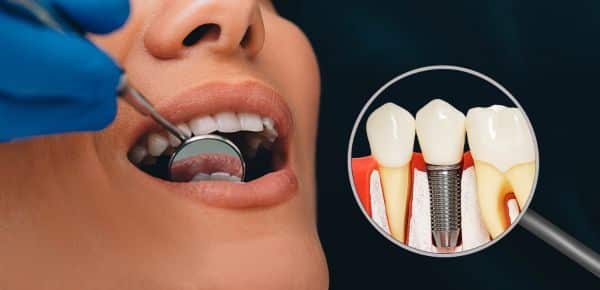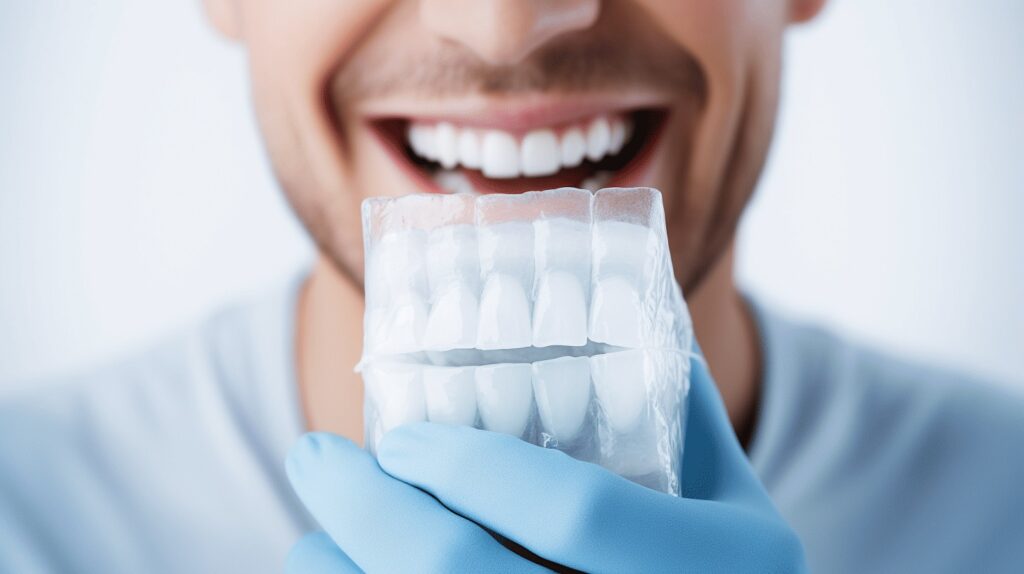Welcome dear readers! 👋
Ever caught yourself missing your carefree laughter because you’re self-conscious about your teeth? Or perhaps you’re struggling to chew your favorite foods due to missing teeth? Don’t worry, you’re not alone Confidence With Dental Implants. Many of us have dealt with these concerns at one point or another, but guess what? There’s an effective and efficient solution—dental implants!
Dental implants have seamlessly transformed the world of dentistry, giving a ray of hope to all those yearning for a perfect smile. They are an excellent long-term option for restoring your smile. In fact, the development and use of implants is one of the biggest advancements in dentistry in the past 40 years. Dental implants are made up of titanium and other materials that are compatible with the human body. They are posts that are surgically placed in the upper or lower jaw, where they function as a sturdy anchor for replacement teeth.
In this comprehensive guide, we’ll take a deep dive into the intricacies of dental implants. We’re going to talk about their success rates, the different types available, their long-term survival rates, and how these rates vary based on the location of the implants. Plus, we’ll walk you through the stunning advancements in dental implant technology, such as Computer-Aided Design (CAD), 3D Imaging Technology, and antibacterial coatings. We’ll even touch on the exciting emerging technologies that are set to revolutionize implants even further!
So, get ready to regain your confidence as you celebrate your smile once again. Dental implants could be the life-changing solution you’ve been searching for!
Table of Contents
Understanding Dental Implants
So, you’ve heard about dental implants and their many benefits but are unsure what they’re all about? Fear not. We’re here with some nitty-gritty details on the world of dental implants, meant to help clear up your doubts, and deepen your understanding.
Let’s dive right in, shall we?
Success Rates
You might be wondering, “How successful are these dental implant procedures?” Well, you’ll be relieved to learn that dental implants are not only reliable but quite successful too. They have awed dental specialists and patients alike with incredible success rates hovering around 90%-95%, especially over a span of 10 years. Talk about a solution you can depend on long-term! 🎯
Of course, like with any medical procedure, the success rate can vary depending on several factors, such as the patient’s overall health, the expertise of the dental surgeon, and post-operative care. However, in general, dental implants have proven their mettle as a dependable and durable solution for missing teeth.
Types of Implants: Endosteal vs. Subperiosteal
Dental implants are not a one-size-fits-all affair. In fact, they come in two main types — Endosteal and Subperiosteal — each designed to cater to different patient needs. So, if you’re considering getting dental implants, it’s crucial to understand these two types.
- Endosteal Implants: The more common of the two types, Endosteal implants are typically made from titanium and shaped like small screws. They are placed directly into the jawbone, making them a great option for patients with a healthy and sufficient amount of jawbone. Plus, did you know they boast higher success rates compared to their Subperiosteal counterparts? 😮
- Subperiosteal Implants: These are an alternative for patients who do not have enough healthy jawbone and do not want to, or cannot, undergo a procedure to rebuild it. Subperiosteal implants sit on top of the jawbone but underneath the gum tissue.
Each of these types has its own set of pros and cons. For a more detailed dive into these two types, you can explore our dedicated Guide to Dental Implants. It\’s filled with essential insights to help you make an informed decision.
All right! You’re now armed with basic knowledge about dental implants. But remember, while this information is a good starting point, nothing beats a consultation with a professional dental care provider. So, if you’re considering dental implants, don’t forget to make that appointment! 👍🏼
Long-term Survival Rates of Dental Implants
It’s no secret that dental implants have revolutionized the world of oral health. Providing a durable, dependable, and aesthetically pleasing solution to missing teeth, the appeal of dental implants is only paralleled by their impressive long-term survival rates.
Now, you might be wondering, just how successful are dental implants over the long haul? Let’s delve into the numbers. Large-scale studies with a broad sample size have made quite the declaration. These studies report that the long-term survival rates of implants are between an impressive 93.3% and 98%. Staggering, isn’t it?
But it does not stop there. After a mean period of 13.4 years of follow-up, the overall implant survival rate doesn’t drop off dramatically. It is reported to still be at an enviable 94.6%. Now, these figures clearly speak volumes about the reliability and steady performance of dental implants.
Think of it like this. Imagine a marathon race where each runner represents a dental procedure. Dental implants wouldn’t just compete, they would be amongst the top-performing runners even at the finish line, barely missing a beat as they cruise the many miles.
There’s just something incredibly reassuring knowing that, when it comes to the longevity of a dental solution, implants top the list. Yes, the initial cost might be higher than other dental procedures, but the longevity they promise—evidenced by 93.3% to 98% survival rates— is an investment into a worry-free future full of smiles.
Confidence With Dental Implants
But even with all these promising numbers, remember that dental care is always personalized. It’s not a one-size-fits-all scenario. The success rate of implants could vary based on factors specific to your individual health. Therefore, having open and clear conversations with your dentist is crucial to understanding whether dental implants are an ideal choice for you.
“The best way to predict your future is to create it.” – This quote applies perfectly to dental implants.
If you are considering this solution, you are investing in creating a future with a potential 94.6% chance of long-term dental success, even after almost 14 years. And who doesn’t like those odds?
So, when it comes to combining aesthetics, functionality, and longevity, dental implants appear to be a viable contender, consistently exceeding expectations with their high survival rates. And that, dear readers, indeed makes them worth considering.
Success Rates Based on Location of Implants
When it comes to dental implants, location greatly influences the success rates. While many of us may have considered dental implant surgery, it’s important to understand that the outcome depends on where these implants are carefully planted- the upper jaw or the lower jaw. 📍 By understanding the science behind this, we can feel much more assured and confident about the procedure.
Lower Jaw Implants
Why is it that lower jaw implants have a slightly higher success rate according to research? Here is some enlightening info for you.
- Stability: Normally, the bone in the lower jaw is denser and sturdier compared to the upper jaw. This fact allows the lower jaw to provide a robust base, increasing the chances of implant success.
- Extensive healing time: Due to the lower jaw\’s nature, these implants usually have a broader healing time window – a vital factor that can influence the effectiveness of the procedure.
- Less proximity to sinus cavities: Lower jaw implants are farther from sinus cavities, thus reducing risks associated with sinus complications during and after the surgery.
Indeed, the research doesn’t lie. There is a five-year success rate of approximately 95% that has been reported for lower jaw implants. Astonishing isn’t it? 😲
Upper Jaw Implants
Upper jaw implants, while still relatively effective, have a slightly lower success rate. Here are some common reasons why this is so.
- Bone quality: The bone quality in the upper jaw is often softer, which can challenge the implant\’s stability.
- Proximity to sinus cavities: The upper jaw’s proximity to sinus cavities can create complications, contributing to a slightly decreased overall success rate.
- Limited healing time: The healing period for implants in the upper jaw can sometimes be a bit shorter, due to the sensitive location and less dense bone structure.
You might be surprised that despite these challenges, the success rate for the upper jaw implants is still a significant 90%! Quite remarkable.💡
Regardless of the success rates based on the location of implants, one thing’s for sure: dental implants have revolutionised restorative dentistry. The stark difference in the success rates between the upper and lower jaws does not undermine their effectiveness. Rather, it highlights the need for careful consideration depending on individual circumstances.
Advancements in Dental Implant Technology
Isn’t it amazing how technology seems to be advancing at warp speed these days? Everywhere we look, we’re met with revolutions in various fields, chipping away at what was once considered science fiction. But did you know that one of the areas experiencing some of the most vivid transformations is dental technology? Specifically, dental implants are progressing at a breakneck speed, taking huge strides towards perfecting the art of replacing missing teeth. Let’s explore some of the innovative advancements in dental implant technology that have captured our attention.
Computer-Aided Design (CAD)
First on our list is the wave of innovation brought about by Computer-Aided Design – commonly referred to as CAD. Talk about a game-changer! If you’ve ever sat in a dentist’s chair fretting about how your new dental implants will look, CAD technology has got you covered. How it works is awe-inspiring:
- By taking an exact scan of your mouth, this technology allows dentists to concoct a precise 3D design of your replacement tooth.
- The design completely eliminates the guesswork and guarantees a seamless fit.
- Furthermore, with the flip of a switch, the design is sent to a milling machine, which crafts your tooth in under an hour!
Isn’t that impressive? CAD is not only simplifying but also speeding up the process of getting dental implants. This exciting phase of Advancements in Dental Implants guarantees a perfect smile in less time than it takes to binge-watch your favorite Netflix show! 🚀
3D Imaging Technology
“But what about the procedure itself?” you may ask. Well, leave it to 3D imaging technology to revolutionize this aspect as well. This technique is changing the dental implant game as:
- It provides highly accurate pictures of your teeth, gums, nerves, and surrounding areas in 3D!
- This level of detail ensures proper planning and the execution of the dental implant procedure with astronomical precision.
- Importantly, this technology reduces chances of error by providing a road map for dental surgeons to follow, making the procedure safer and faster than ever.
If that doesn’t pump you up for your next dentist appointment, we don’t know what will! 🪥
Antibacterial Coatings – Confidence With Dental Implants
Finally, let’s shine a spotlight on one bite-sized yet, powerful advancement: antibacterial coatings. This breakthrough is essential as:
- These special coats are applied on the implants preventing bacteria from building up.
- It promotes faster healing post-procedure, and minimizes the risk of infections and complications.
- Besides, it contributes to the longevity of the implants.
Revolutions such as these engender confidence in these procedures, reinforcing our belief in the continual advancements steering dental implant technology. It’s fantastic to see how these innovations blend, contributing to a future where fear of dental procedures will be a thing of the past and flashing those pearly whites will be an everyday celebration. 🎉
Tech is on our side, revolutionizing the way dental procedures are performed and bringing in faster, safer, and more efficient ways to bring back your aura via your smile. The ceaseless Advancements in Dental Implants are something to admire, proving that no frontier is uncharted in this exciting era of rapid progress!
Emerging Technologies in Dental Implants
We all appreciate a gleaming, healthy smile. It\’s one of the first things people notice about us and an essential part of our self-confidence. However, if you’ve lost a tooth or several, you’re not alone. Dental implants have been providing successful solutions for years. But did you know that this field is currently undergoing an exciting revolution? Yes, emerging technologies, specifically 3D bioprinting and nanotechnology, are poised to radically transform the way dental implants are done.
3D Bioprinting
Technology has a profound impact on healthcare, and dental health is not an exception. 3D bioprinting is one such game-changer!
What is so unique about 3D bioprinting in dental implants?
- Personalization: Through digital scans or radiographs, a dentist can obtain detailed 3D images of your teeth and jaw, allowing for precise, personalized implants. It’s like having a tooth made just for you! 😊
- Efficiency: Gone are the days of waiting weeks for your implants. With 3D bioprinting, implants can be printed while you wait in the office. No more extended periods without a tooth!
- Material diversity: 3D bioprinting allows for the use of a variety of biocompatible materials. This flexibility enables the creation of implants that not only mimic the appearance of your natural teeth but their function too.
Nanotechnology – Confidence With Dental Implants
Mention the word ‘nanotechnology’, and you might think, straight out of a science fiction novel! But it’s a reality in dental implants world that\’s delivering amazing benefits.
So, how does nanotechnology play a part in dental implants? Let’s explore:
- Improved Osseointegration: Nanotechnology can modify the surface of the dental implant on a microscopic level. This enhances the implant\’s interaction with the surrounding bone, encouraging better osseointegration (the process where the bone fuses with the implant).
- Antibacterial Properties: This technology has paved the way for creating implants with nanostructured surfaces that are resistant to bacterial growth, reducing the risk of post-implant complications.
“There is no greater wealth than health,” wisely quoted by the ancient Roman poet Virgil, and we couldn’t agree more. These emerging technologies, such as 3D bioprinting and nanotechnology, in dental implants, are not just innovations. They’re solutions that promise better oral health outcomes, making your journey towards a radiant smile, not just successful but seamless and comfortable. Here’s to the power of a smile that can light up a room! 😄
Importance of Computer-Guided Implant Placement
In the cutting-edge world of dental practice, there’s a game-changer that deserves our full attention: Computer-Guided Implant Placement. This technology-savvy approach has revolutionized dental implant procedures, bringing a whole new level of accuracy, control, and success. The heart of the matter lies in enhancing patient comfort while guaranteeing a precisely sculpted smile.
Indeed, it isn’t a surprise why this technique has quickly become the gold standard in dental implantology. It incorporates advanced imaging and planning software to map out the exact location, angle, and depth for each implant, ensuring it seamlessly fits the patient’s anatomical structure. 💻
You might be wondering: Why should this matter to us?
Let’s delve into the key reasons.
- Precision and Accuracy: With computer-guided implant placement, dentists can place an implant with pinpoint accuracy, reducing the risk of damaging surrounding teeth or nerves. This means less post-operative pain and a quicker recovery time for patients. 🎯
- Improved Planning: This technology allows the dentist to visualize the entire oral structure in 3D, thereby facilitating better planning and lowering the chances of unexpected surprises during surgery. 📊
- Higher Success Rates: Our focus is not merely on the aesthetic outcome but also on ensuring a high success rate for the implant. As our additional data point out, computer-guided techniques ensure consistent results and higher success rates for the dental implant procedure. 🏆
Quoting an old adage, we often say, Measure twice, cut once.
In our world, this means plan thoroughly, perform flawlessly, and achieve the best results. With computer-guided implant placement, we are doing just that! We are equipped with digital maps guiding us throughout the process, enabling us to provide dental implants that excel in function, fit, and form, leading to winning smiles that last a lifetime! 😄
So next time you consider dental implants, remember the brilliance of technology and the confidence it instills. Computer-guided implant placement is indeed the key to a successful, painless, and worry-free dental implant journey! It’s not just a fancy tech term but an instrumental tool in achieving exceptional dental treatments. ✨
Conclusion – Confidence With Dental Implants
Bringing back that captivating smile and reinstating self-confidence do not have to remain an unachieved goal. With the latest advancements in dental implant technology, we at Wilshire Smile Studio, strive to replace missing teeth in the most natural-looking manner possible. From computer-guided implant placements to the use of inventive nanotechnology for increased longevity, dental implants are paving the way for a future brimming with radiant smiles.
Every smile has a story, and we’re here to make sure yours tells a tale of health, happiness, and confidence. After all, we firmly believe in our commitment to provide exceptional dental care and aim to help you acquire your perfect smile. Let’s embrace innovation and tap into this world of possibility. Remember, it\’s never too late for that perfect smile transformation Confidence With Dental Implants.
For more information about all our dental services, particularly our state-of-the-art dental implants, feel free to visit us at Wilshire Smile Studio today! Ensuring your radiant grins is our finest gratification. 🌟
Book your free consultation with us online or call (323) DENTIST (323-336-8478) today.
Frequently Asked Questions – Confidence With Dental Implants
1. What are dental implants?
Dental implants are artificial tooth roots made of titanium that are surgically placed into the jawbone. They provide a stable foundation for replacement teeth and help restore the function and appearance of natural teeth.
2. Who is a good candidate for dental implants?
Good candidates for dental implants are individuals who have missing teeth, have sufficient jawbone density, have good oral health, and are committed to maintaining proper dental hygiene. Your dentist can evaluate if you are suitable for dental implants.
3. How long do dental implants last?
When properly cared for, dental implants can last a lifetime. However, the longevity of dental implants depends on various factors, including oral hygiene practices, regular dental check-ups, and lifestyle habits such as smoking and teeth grinding Confidence With Dental Implants.
4. Is the dental implant surgery painful?
Dental implant surgery is usually performed under local anesthesia, ensuring that the procedure is virtually painless. After the surgery, some discomfort and swelling may be experienced, but this can be managed with pain medication prescribed by your dentist.
5. Are dental implants expensive?
The cost of dental implants can vary depending on factors such as the number of implants needed, additional procedures required, and geographical location. While dental implants may initially seem more expensive than other tooth replacement options, their durability and long-term benefits often make them a worthwhile investment Confidence With Dental Implants.









